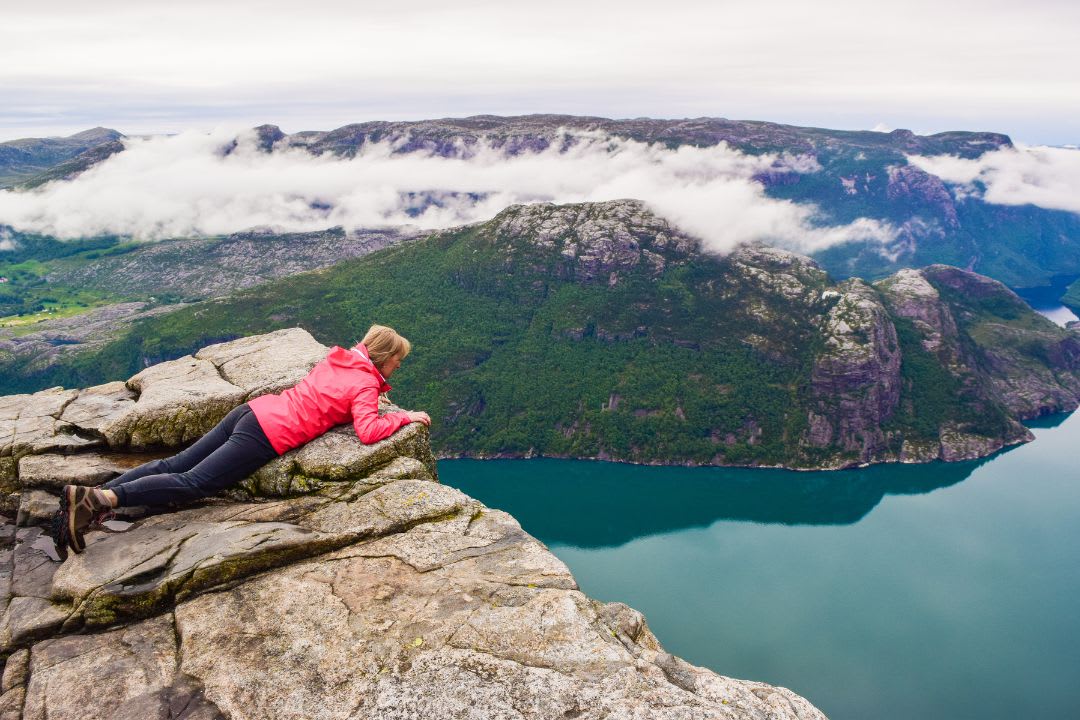
Ultimate hiking guide to Pulpit Rock
Discover our guide to hiking Pulpit Rock and explore Norway’s stunning landscapes confidently.
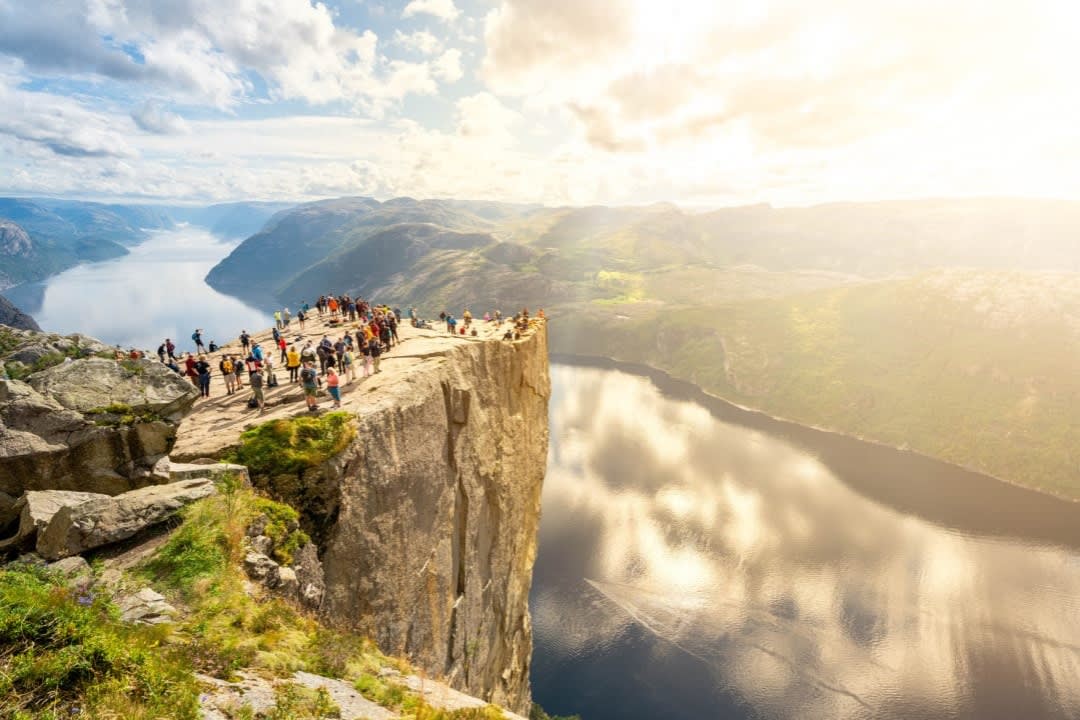
Discover the best ways to visit Pulpit Rock, one of Norway’s most breathtaking cliffs, and enjoy an unforgettable experience. This guide covers transport options, timing, practical tips, and activities to make the most of your trip.
Picture yourself standing on a flat cliff, 604 metres above the sparkling Lysefjord, the wind in your hair, and the vast panorama stretching to the horizon. That is Pulpit Rock, or Preikestolen, one of Norway’s most dramatic and iconic natural landmarks. Visitors from around the world flock here to soak in the cliff’s sheer drama, marvel at the fjord below, and capture that perfect photograph to treasure forever.
Knowing the best ways to get there, the ideal time to visit, and what to expect along the way ensures your experience is smooth, safe, and utterly unforgettable. For even more inspiration on adventures in the area, check out our blog article about the top 10 outdoor activities in Norway.
Pulpit Rock, known locally as Preikestolen, is a flat-topped cliff formed by glacial activity over 10,000 years ago. It measures roughly 25 by 25 metres and rises 604 metres above the Lysefjord, offering a viewpoint that has become one of Norway’s most recognisable natural landmarks.
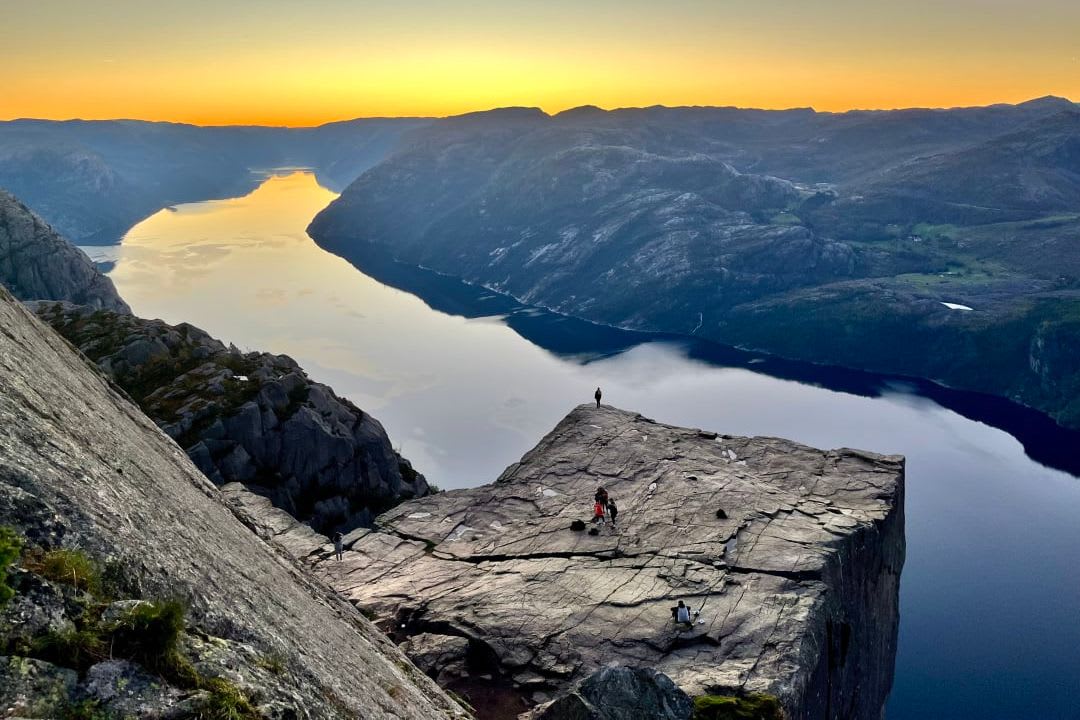
Unlike cliffs that require technical climbing, Pulpit Rock is accessible to most visitors while still providing the exhilarating sensation of standing above a sheer drop. From the plateau, boats glide across the fjord below, waterfalls cascade from nearby cliffs, and distant peaks frame a panorama that feels almost otherworldly.
Geologically, Preikestolen was shaped by glaciers that carved deep grooves into the surrounding rock. The cliff’s vertical face stands as a testament to the immense power of ice and time. Today, it is a symbol of Norway’s wild beauty and a bucket list destination for nature enthusiasts and adventurers alike.
For a complete breakdown of the trail, tips, and what to pack, check out our Ultimate hiking guide to Pulpit Rock.
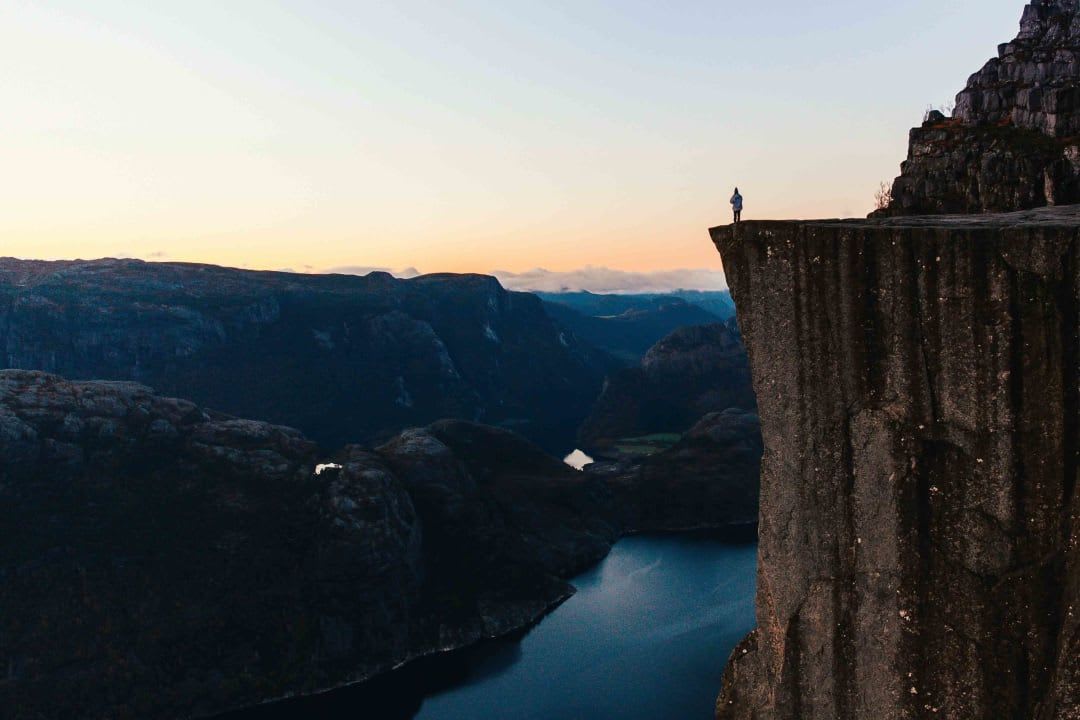
Reaching Pulpit Rock begins with travelling to Stavanger, the main gateway for visitors. From Stavanger, several options allow you to enjoy both practicality and spectacular scenery.
Driving from Stavanger gives flexibility and scenic views. You can take the ferry to Tau and continue via Jørpeland on Rv 13 to Preikestolen Fjellstue. This journey combines coastal landscapes, charming villages, and glimpses of the fjord along the way.
From Sandnes, the route includes a ferry from Lauvvik to Oanes and a drive up to Preikestolen Fjellstue. Both routes blend road and ferry travel, providing multiple perspectives on Norway’s dramatic landscapes.
For those who prefer not to drive, a bus service connects Stavanger to the trailhead. Seasonal schedules vary, but the buses offer a stress-free way to reach Preikestolen without worrying about navigation or parking.
Guided tours are ideal for a completely hassle-free experience. Many include transport from Stavanger, a local guide, and sometimes a Lysefjord cruise. This allows visitors to focus entirely on the scenery and the adventure without logistics concerns.
Whichever option you choose, arriving at Preikestolen Fjellstue feels like stepping into the adventure itself. The site offers parking, restrooms, and a cosy café to prepare for your visit. For detailed information on buses, ferries, and other transport options to reach Pulpit Rock, visit Visit Norway – Preikestolen transport options.
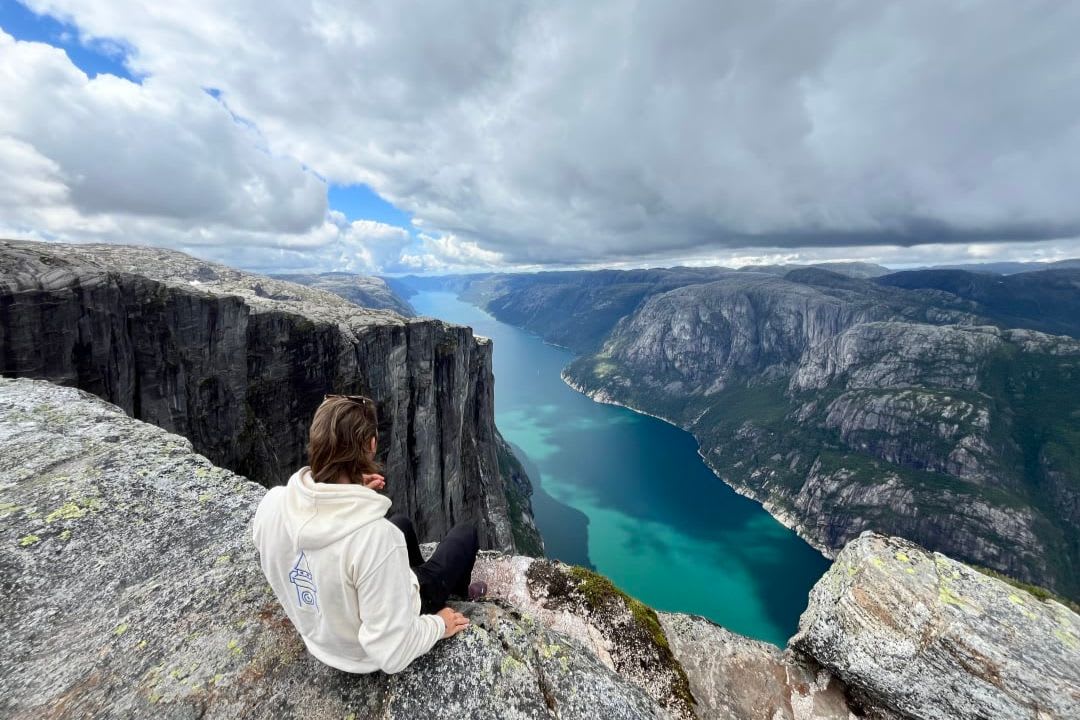
Visiting Pulpit Rock is spectacular any time of year, but choosing the right season can make a big difference to your experience.
Spring is a magical time at Preikestolen. The snow from higher mountains melts, waterfalls roar to life, and the surrounding valleys bloom with fresh greenery. Temperatures are mild, the trails are less crowded, and the fjord sparkles under clear skies. It’s perfect for boat trips along Lysefjord or a gentle stroll to viewpoints without the summer crowds.
Summer is peak season for Pulpit Rock, and it’s easy to see why. Long days, warm temperatures, and bright sunshine make it ideal for exploring the cliff, fjord cruises, and kayaking adventures. While it can be busier, the lively atmosphere adds energy to the visit, and early mornings or late afternoons are excellent for avoiding crowds while enjoying stunning light for the fjord and cliff views.
Autumn brings crisp air, fewer visitors, and dramatic colours. The forests around Pulpit Rock turn golden and red, creating a fairytale-like backdrop. Cooler temperatures are perfect for longer adventures, like exploring Flørli 4444 Steps or kayaking around Jørpelandsholmen Islets. The fjord’s reflections in autumn light are simply breathtaking.
Winter transforms Pulpit Rock and Lysefjord into a quiet, serene escape. Snow-dusted cliffs, icy waters, and clear crisp days create a peaceful and magical atmosphere. While some trails can be slippery and boat trips may be limited, this season is ideal for those seeking solitude and a truly dramatic Norwegian landscape. Always check weather and accessibility before visiting in winter.
Pulpit Rock offers unforgettable views and experiences in every season, so whether you love sunny fjords, autumn colours, or snow-dusted cliffs, there’s always an adventure waiting.
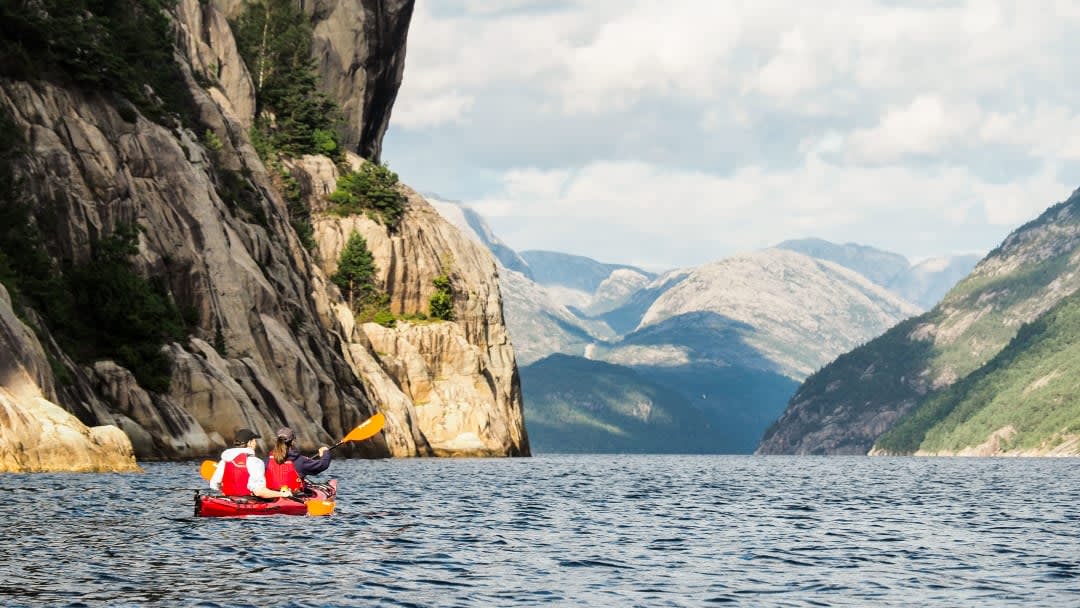
Lysefjord is a spectacular fjord carved by glaciers, with towering cliffs, cascading waterfalls, and calm waters that shimmer in every shade of blue. It’s only about 25 minutes from Pulpit Rock by car or boat, and roughly an hour from Stavanger, making it easy to combine a fjord adventure with your Pulpit Rock visit. From the water, the fjord looks even more dramatic: sheer cliffs rise abruptly from the waves, and hidden coves reveal secret pockets of nature. For an adrenaline rush, hop on a Lysefjord RIB Boat Tour from Stavanger and feel the spray of the fjord as you zoom past cliffs and waterfalls. If you prefer a more tranquil adventure, a guided kayaking excursion in Lysefjord let you glide at your own pace, exploring quiet corners, navigating around tiny islands, and taking in the majestic scenery from a serene perspective.
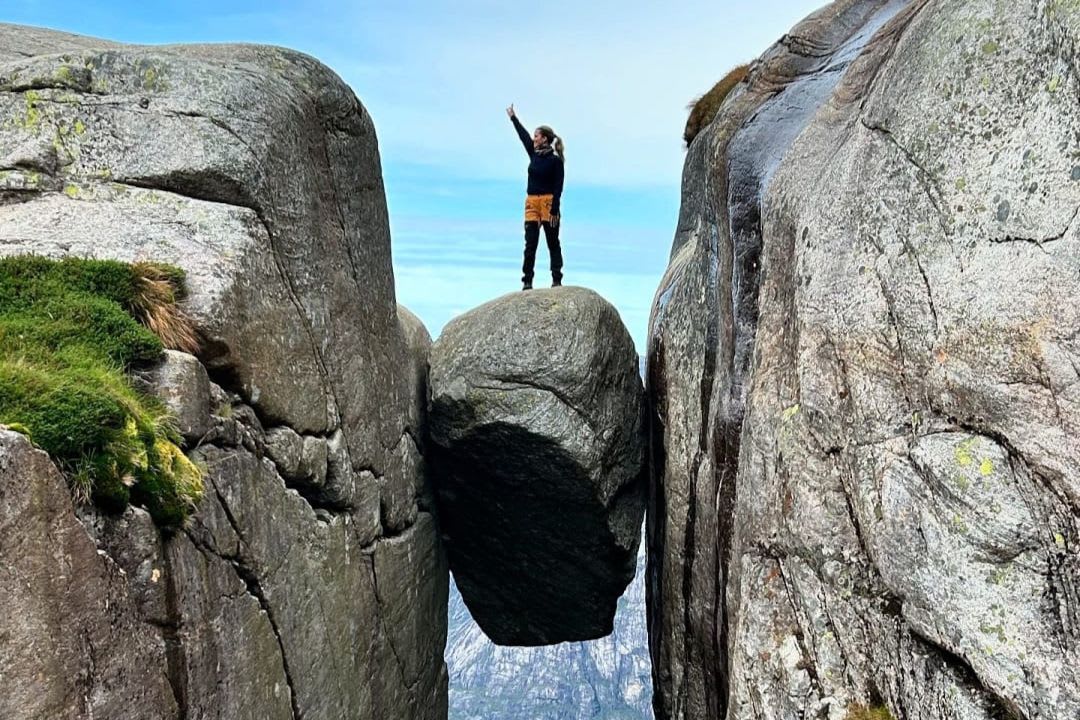
Kjerag is the ultimate spot for thrill-seekers and nature lovers. Famous for the Kjeragbolten, a boulder precariously wedged between two cliffs, this towering rock formation stands about 70 kilometres east of Pulpit Rock, roughly a two-hour drive from Stavanger. The area is rugged and dramatic, with steep cliffs plunging into Lysefjord below. The hike is challenging but every step is rewarded with sweeping panoramas of fjord, mountains, and sky. For those who dare, standing on Kjeragbolten is a heart-racing experience and a memory that lasts a lifetime. Guided hikes to Kjerag help visitors navigate safely, adding expert tips and insider knowledge about this awe-inspiring natural playground.
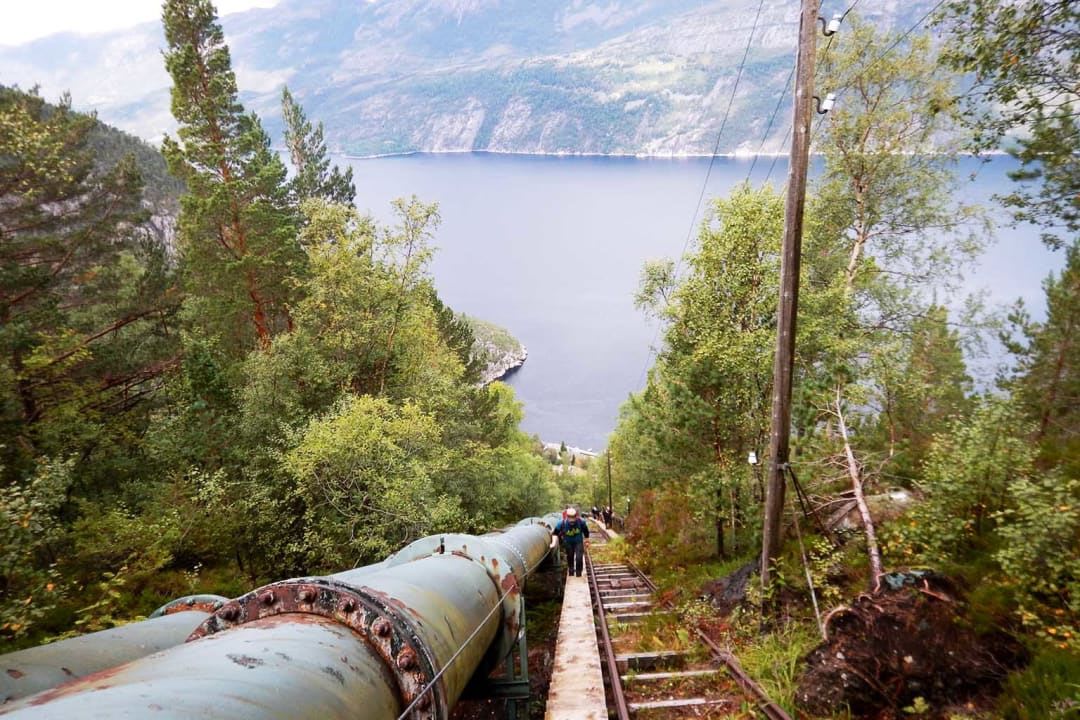
Flørli is home to the world’s longest wooden staircase, a monumental 4444-step climb that hugs the fjord’s steep slopes. About 35 kilometres from Pulpit Rock and a 45-minute drive from the trailhead, it is perfect for anyone craving a physical challenge mixed with jaw-dropping scenery. As you ascend, the sparkling Lysefjord stretches out below and the surrounding mountains frame a constantly changing panorama. At the top, the sense of accomplishment is matched only by the incredible views that make every step feel worth it. Along the way, the staircase passes historic buildings, small settlements, and scenic viewpoints, turning the climb into a full-on adventure with surprises at every turn.
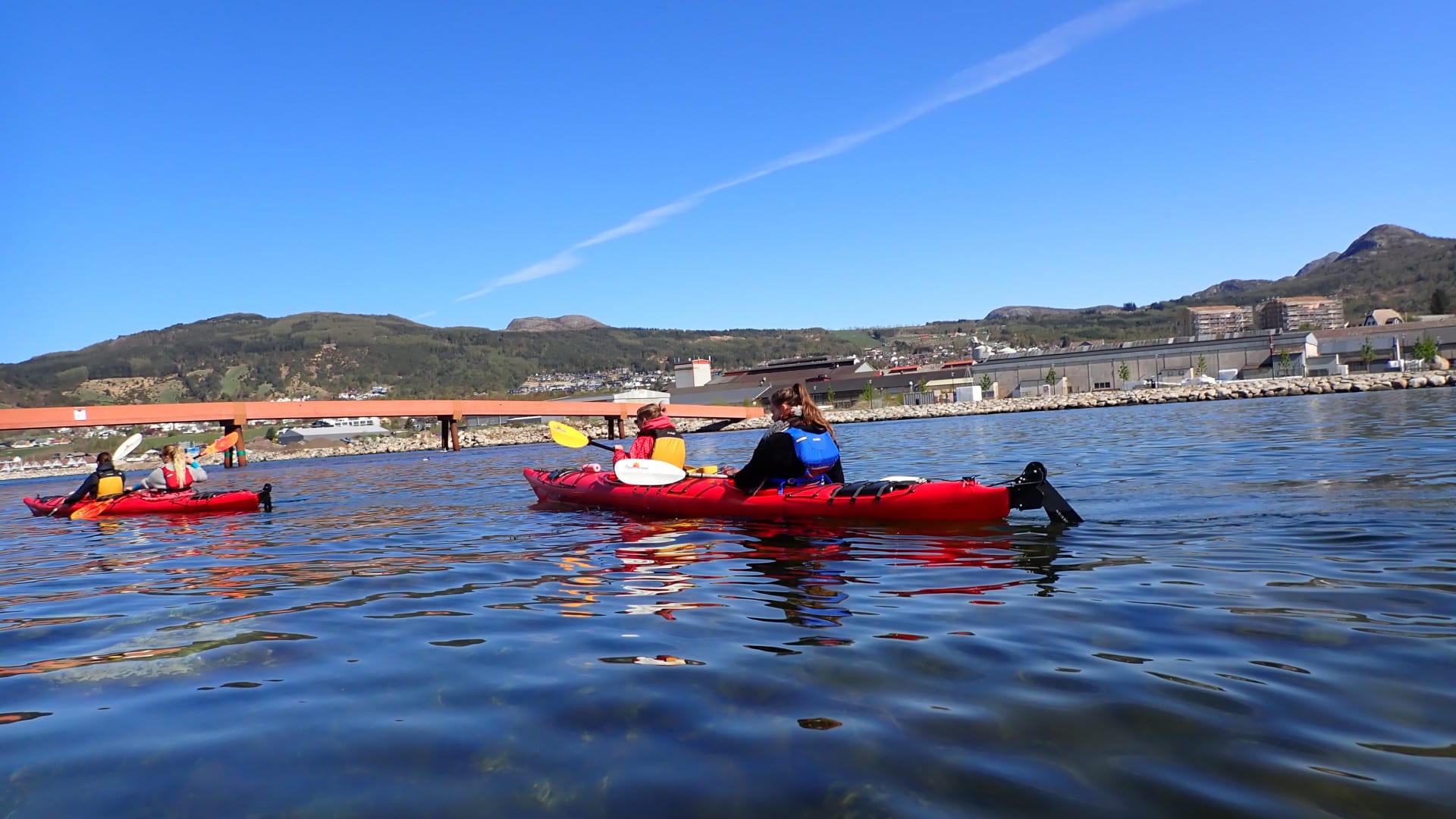
Just 20 minutes from Pulpit Rock and around 40 minutes from Stavanger, the Jørpelandsholmen Islets are tiny gems in the fjord, perfect for explorers seeking peace and charm. These small islands are surrounded by calm waters and home to quiet beaches, rocky shores, and abundant birdlife. Kayaking around the Jørpelandsholmen islets lets you peek into hidden inlets, paddle through shimmering waters, and enjoy the sensation of being completely immersed in nature. It’s a serene escape from the busier trails, and every turn of the kayak reveals new angles of the fjord’s dramatic cliffs and sparkling reflections.
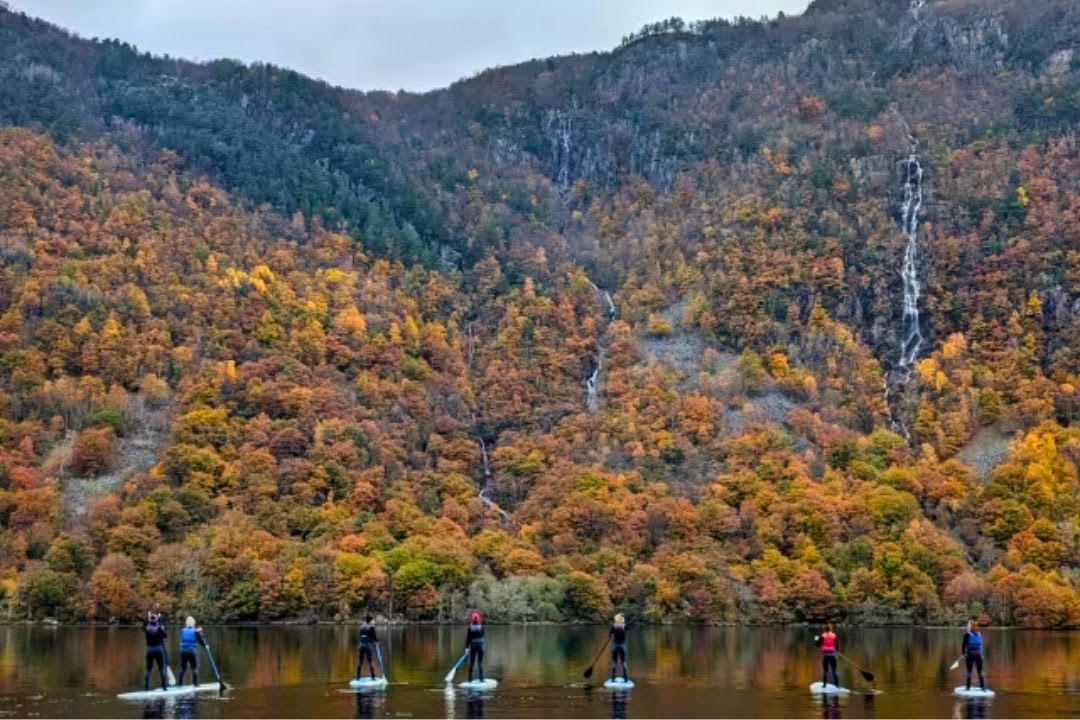
Månafossen Waterfall is one of Norway’s most stunning waterfalls, plunging over 90 metres into a green gorge. Located about 30 kilometres from Pulpit Rock and roughly a 45-minute drive from the trailhead, it combines dramatic scenery with the thrill of exploration. A guided hike in Månafossen waterfall leads you to the base, where the roar of the water and mist in the air create a magical, energising atmosphere. For an unforgettable adventure, the frafjord kayaking and Månafossen waterfall hiking excursion combines a scenic sea kayaking trip along the fjord with a hike to the base of the waterfall, letting you approach the cascade from the water before exploring it up close and feeling the mist on your face. The surrounding cliffs, verdant vegetation, and rushing water make it a highlight for anyone wanting to feel close to Norway’s wild beauty.
These nearby attractions offer a taste of the incredible landscapes and outdoor experiences around Pulpit Rock, from fjord cruises and kayaking to hiking and waterfall explorations. Each spot brings its own charm and thrill, and together they make the region a playground for nature lovers and adventure seekers alike.
For more ideas and inspiration, you can discover even more activities to enjoy in Pulpit Rock in our dedicated article about Top activities in Pulpit Rock.
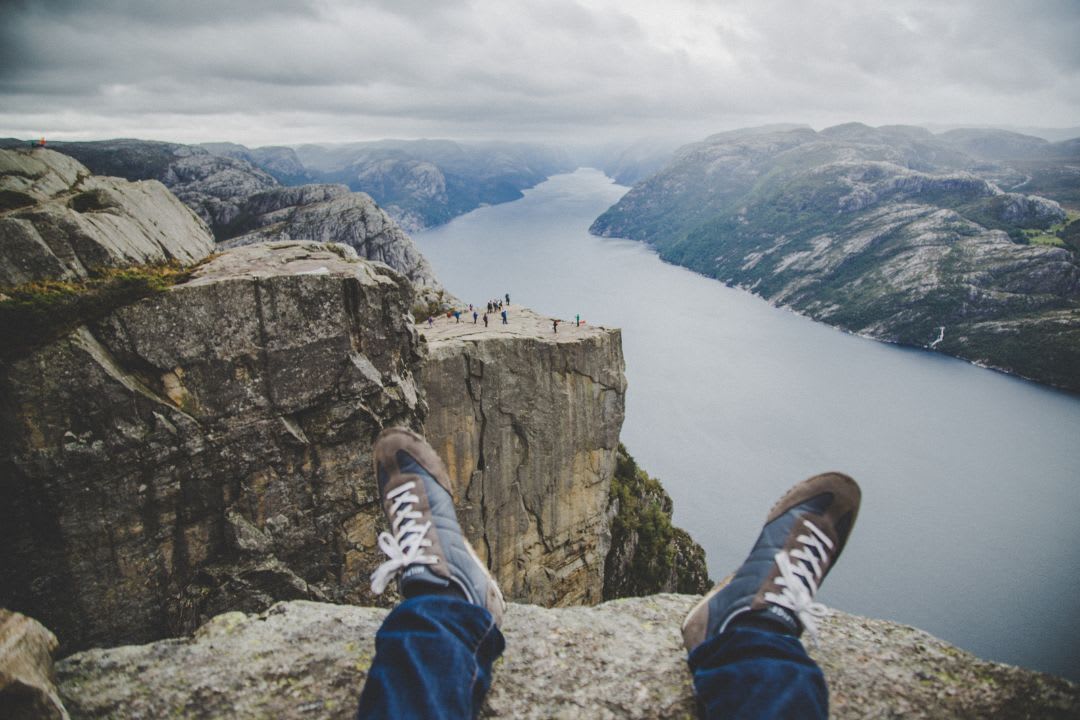
Pulpit Rock (Preikestolen) is one of Norway’s most iconic cliffs, and a visit is a spectacular adventure even if you don’t hike all the way to the top. Here are some tips to make your experience smooth, safe, and unforgettable:
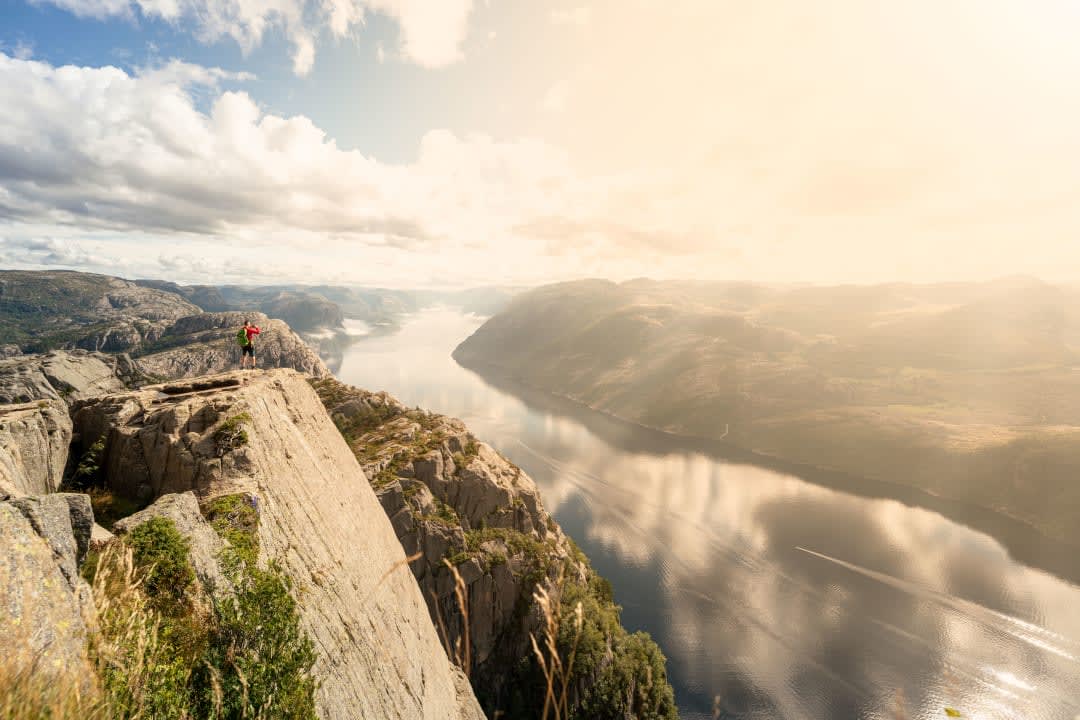
Standing on the flat plateau of Pulpit Rock and looking down at the sparkling Lysefjord is a moment you will never forget. With easy access, nearby attractions, and practical tips for a safe visit, your day can be effortless and full of adventure.
Pulpit Rock is more than a cliff. It is a window into Norway’s wild beauty and the perfect highlight of any Scandinavian journey. Plan carefully, enjoy the scenery, and prepare for an experience that will stay with you forever.